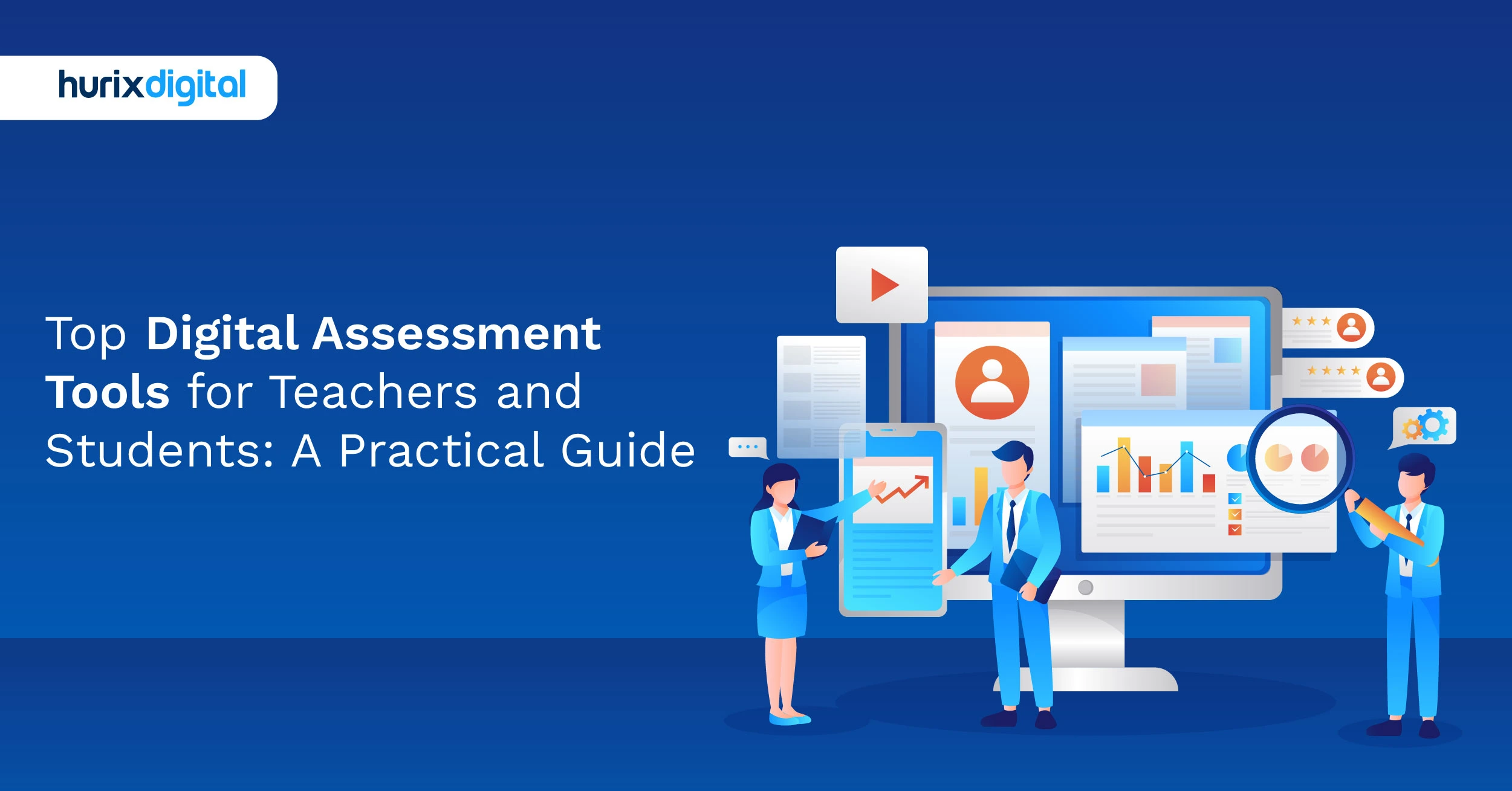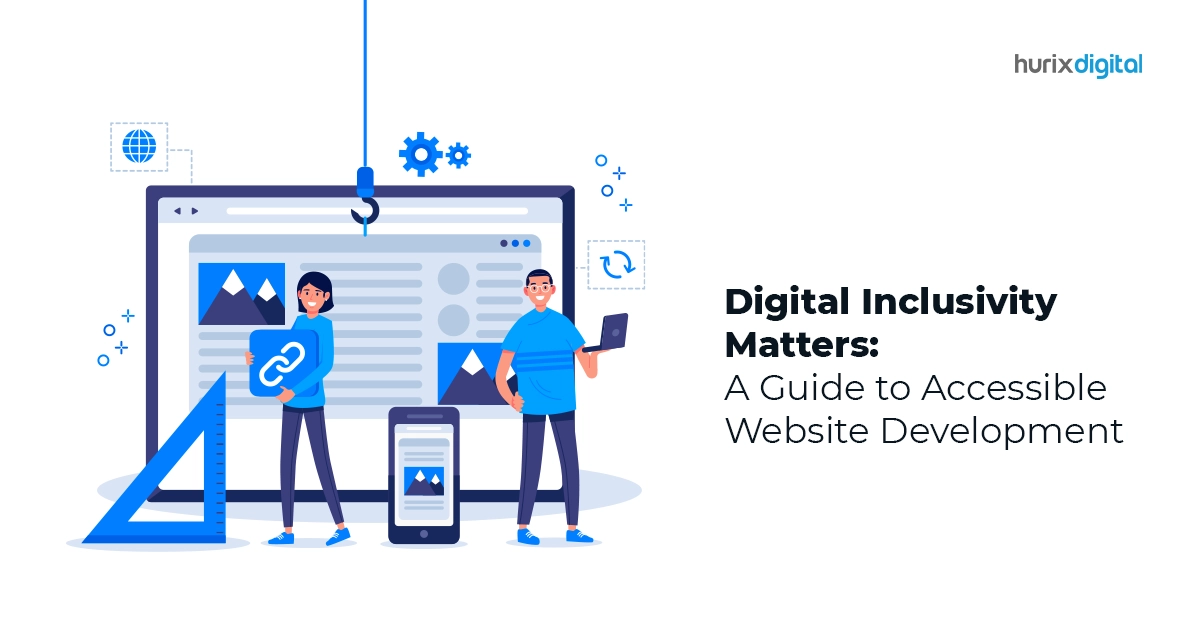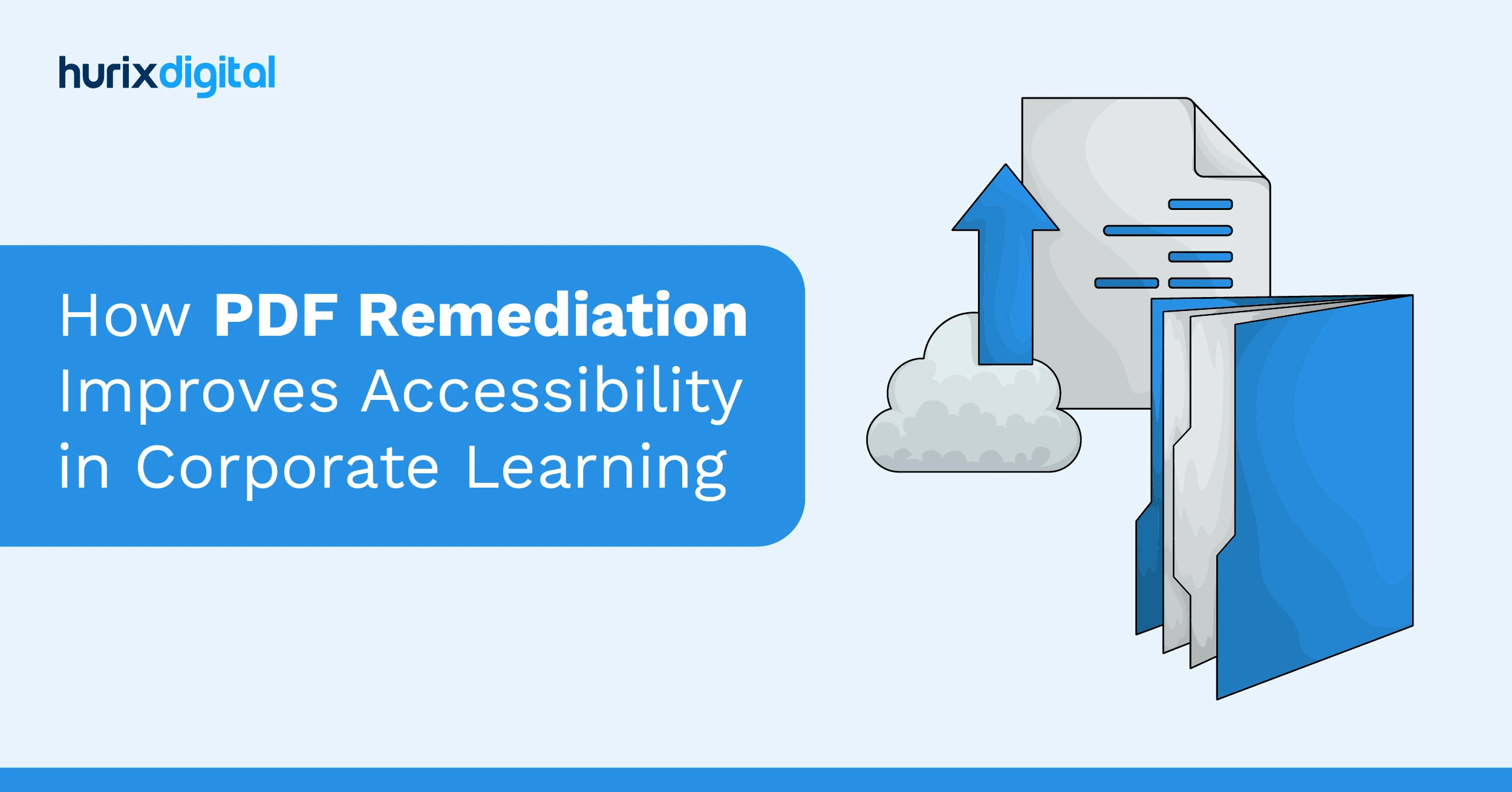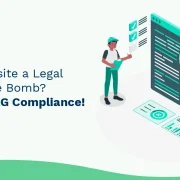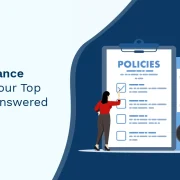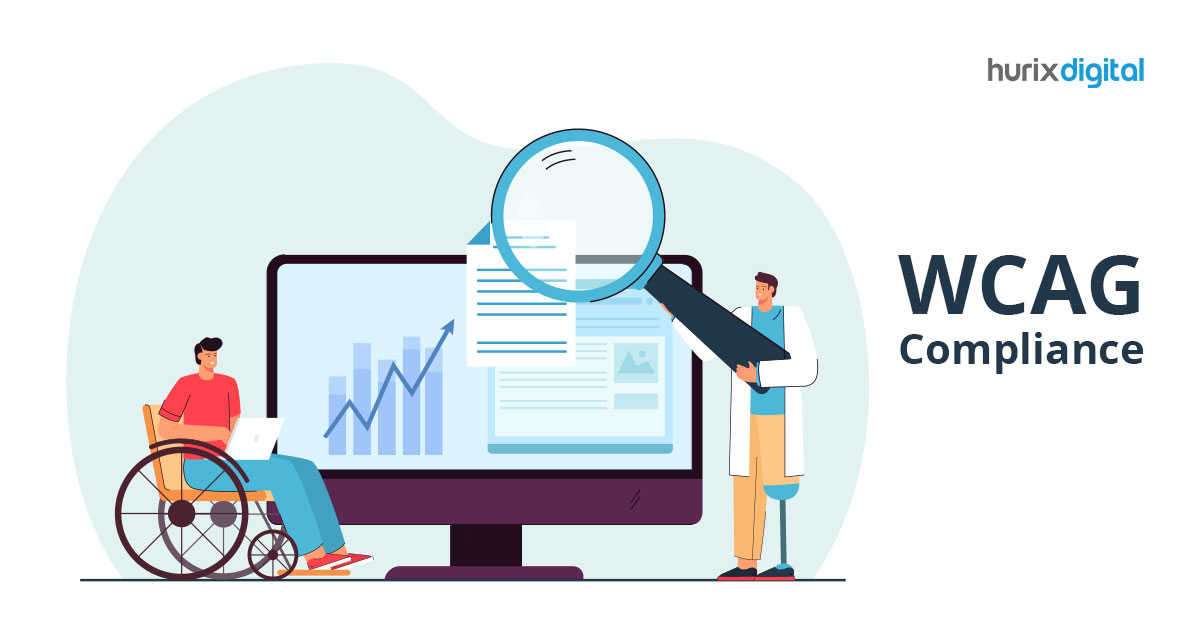
The Ultimate Guide to WCAG Compliance for the Website Developers
According to a study by WebAIM, 56.8% show errors and the websites don’t meet the minimum level of WCAG 2.0 accessibility standards. This indicates that there is still a significant gap in web accessibility, despite the growing awareness of its importance.
As many as 56.8% of surveyed web pages depict errors; therefore, their websites do not even meet the desired minimum WCAG 2.0 accessibility standards. The wake-up call has been sounded, but it seems that there are still huge gaps in web accessibility.
One of the needs of the hour is becoming WCAG compliant and standing tall above fellow competitors by businesses. Such business houses invest a lot and add manpower while designing their website, as it speaks volumes about a successful business.
It encompasses the aspects of layout, design, responsiveness, flexibility, visual elements, and multi-device compatibility. No businessman would want to have a mediocre website; hence, most of them spend a pretty penny on the best sites ever built.
Still, most businesses overlook one crucial issue: web accessibility. Your website may look fresh and user-friendly to most audiences, but what about people with disabilities?
Read more on web accessibility and why WCAG compliance is important for your website.
Table of Contents:
- What is Web Accessibility?
- Who Dictates Web Accessibility Guidelines?
- WCAG Compliance Guidelines
- WCAG Compliance Levels
- How to Achieve WCAG Compliance?
- Conclusion
What is Web Accessibility?
The strategy of making websites accessible for all site visitors, including individuals with disabilities, sensory impairments, and limitations, is known as web accessibility.
It is estimated that over 1 billion people around the world experience some form of disability. Regular day-to-day activities are harder for them than for most people. This represents a massive market opportunity for businesses that prioritize web accessibility.
Businesses need to follow certain design principles to ensure that people with disabilities get the same site experience, just like every other visitor. Your website must provide a similar experience to all users, which is why adhering to web accessibility guidelines is important.
The following factors answer what WCAG compliance is and make it essential for businesses to adhere to these guidelines:
1. Brand Reputation and Customer Experience
Ensuring your website is accessible ensures that all users can make the most effective use of it. An accessible website tends to be easier to use and navigate with, and therefore its users are likely to be satisfied and loyal to the website.
Many WCAG complaint websites tend to become search engine-friendly, which increases their chances of being visible and receiving more organic visits.
2. Ethical Considerations
The web’s accessibility is social because it provides all people in any corner of the earth with equal access to information and opportunities online. Prohibiting people with disabilities from accessing sites violates their human rights as well.
Who Dictates Web Accessibility Guidelines?
There are no constitutional laws that make web accessibility compliance mandatory. However, you can be sued or face a lawsuit if your website is inaccessible. Web accessibility is not just about complying with legal requirements; it’s also about providing a positive user experience for all visitors to your website. By making your website accessible, you can improve the overall user experience and increase customer satisfaction.
The Web Accessibility Initiative (WIP) of the World Wide Web Consortium (W3C) is the governing body that publishes the Web Content Accessibility Guidelines (WCAG).
It is important to ensure that anyone may consume, navigate, or access whatever information you share. The simplest method to accomplish this is to follow WCAG, so let’s go over their standards and guidelines.
Also Read: Accessibility for All: How WCAG 2025 Can Drive Positive Change Within Your Organization
WCAG Compliance Guidelines
As per WCAG 2.1, there are four principles to adhere to when creating your website:
1. Perceivable
Audiences visiting your website should be able to perceive all the available content on the site. This principle is directly tied to the senses, specifically vision, hearing, and tactile interactions. If a visitor lacks one of these senses, your website should still be accessible to them.
If a user is blind and unable to see your content, they will use screen reader software to convert text into synthesized speech or braille characters. Your website must be compatible with such software to facilitate accessibility.
2. Operable
Every user will interact with your website in a variety of ways. Your website must be operable to all of them irrespective of the action they take.
Navigating your website, clicking a button, adding a product to the cart, signing up for your newsletter, etc., should be easily operable for all visitors. They might use only a keyboard or a joystick instead of a mouse, and your website options must be accessible to those devices.
On most sites, voice recognition is used only in the search box. However, allowing access to all your website information through voice search is an option worth considering. Now is the time to optimize your website so you can build on the voice technology options you offer.
3. Understandable
Visitors should be able to comprehend all of the information on the website. Screen reader software must accurately interpret all content with zero backend issues that render the reader incomprehensible.
This principle relates to all content and its readability. Websites should use simple language and avoid lengthy explanations or difficult technical jargon that most visitors would not comprehend.
Enhancing readability is not just helpful for screen readers and people with disabilities; it must be a general practice to deliver a better experience for all your customers.
Make your content easy for machines like screen readers, Google crawlers, etc., to read without issues.
4. Robust
Your website must be flexible and compatible with any type of technology or devices your visitors might use.
As stated previously, some users might use a joystick instead of a mouse; blind people might use screen readers to comprehend your content. Your website must work with multiple devices and operating systems without hiccups.
Robustness is the crux of web accessibility, so make sure your website is compatible with assistive technologies and devices to be compliant.
WCAG Compliance Levels
WCAG compliance and accessibility requirements for websites have three different levels to categorize the level of compliance:
1. A Level
This is the minimum level of compliance for online content. It’s a good place to start, but it shouldn’t be the end objective for any company with a website. A level can save you from a lawsuit, but upgrading to a higher level as you grow is recommended.
2. AA Level
Private businesses with their own websites usually strive towards AA compliance. These guidelines are attainable for almost any website without being overly tough or complex.
Adopting AA level rules will guarantee that people with disabilities experience reasonable access.
3. AAA Level
This is the highest level of compliance and is reserved solely for government sites. Average/private businesses might find it hard to implement this level of compliance, and it might not be needed for them either.
WCAG compliance is a necessity. The governing body is constantly updating the guidelines. WCAG 2.1 is almost ready to be updated with WCAG 2.2, a new set of web accessibility guidelines.
How to Achieve WCAG Compliance?
Businesses that prioritize web accessibility can tap into a market with a combined spending power of over $6 trillion, highlighting the economic benefits of inclusive design. You can easily achieve WCAG compliance by adhering to some of the common principles set by WCAG:
1. ALT Text
Web crawlers and screen readers cannot read Images. It is essential to add alt text describing the image so the machine can understand that it is an image and read it aloud for a person with a disability.
2. High Contrast
The background of your website and your web elements, like icons, text, CTA buttons, etc., should be in high contrast with each other. This will make it easier for crawlers and other accessibility readers to interpret it easily.
3. Clever Use of White Space
White space denotes every space you use on your website – letter spacing, icon spacing, line spacing, font spacing, etc. Using white space more effectively will make it easier for people with visual impairments to understand the content.
5. Color Friendly
Your website may be accessed by those who are colorblind. Certain colors shouldn’t be used together in menus or navigation because they may confuse people who are colorblind.
6. Captions
Sometimes, you might use a video to convey a message quickly. In that case, the landing page videos must have captions and subtitles so people with hearing loss can understand what the video is about.
You might use videos that provide a walkthrough of your product with no narration or audio. Ensure you narrate the videos while giving a product walkthrough, so people with visual impairments can perceive what’s happening.
6. Autofill
People with physical deformities can find it hard to enter their details every time they want to sign up or log in. Make sure that autofill is enabled for your website to make it easy for them.
If you own an eCommerce store, ensure that all your search box has an autofill option for all the products listed on your site.
7. Keyboard Accessibility
Ensure that all interactive elements, such as links, buttons, and form fields, can be navigated using the tab key. Consider implementing keyboard shortcuts to allow users to quickly access common functions. Provide clear visual indicators of the currently focused element.
Test your website with a keyboard only to identify any navigation issues. Use appropriate keyboard shortcuts and focus indicators to make navigation easier.
8. Mobile Accessibility
Make your website touch-screen-friendly, ensuring the elements are of sufficient size to be tapped and that navigation is very intuitive. Ensure that your site adapts to different screen sizes and orientations, offering a seamless experience.
Test your site using screen readers and voiceover features so you can ensure that it works well for users who rely on those technologies.
Also Read: Preparing Your Website for WCAG 2025: A Step-by-Step Guide
Conclusion
It is tough for people with disabilities to perform daily tasks. So, your ultimate goal should be to make it easy for them in the digital world. Here’s where WCAG compliance comes into play.
WCAG compliance ensures that websites are easily accessible for all people, especially those with disabilities. Multiple tools on the internet can help make your website WCAG-compliant.
Hurix Digital can make the web accessibility process easily scalable for your business website. So, if you want to ensure a hassle-free experience for all your users and stay ahead, Hurix Digital is just a click away.

Vice President – Content Transformation at HurixDigital, based in Chennai. With nearly 20 years in digital content, he leads large-scale transformation and accessibility initiatives. A frequent presenter (e.g., London Book Fair 2025), Gokulnath drives AI-powered publishing solutions and inclusive content strategies for global clients

